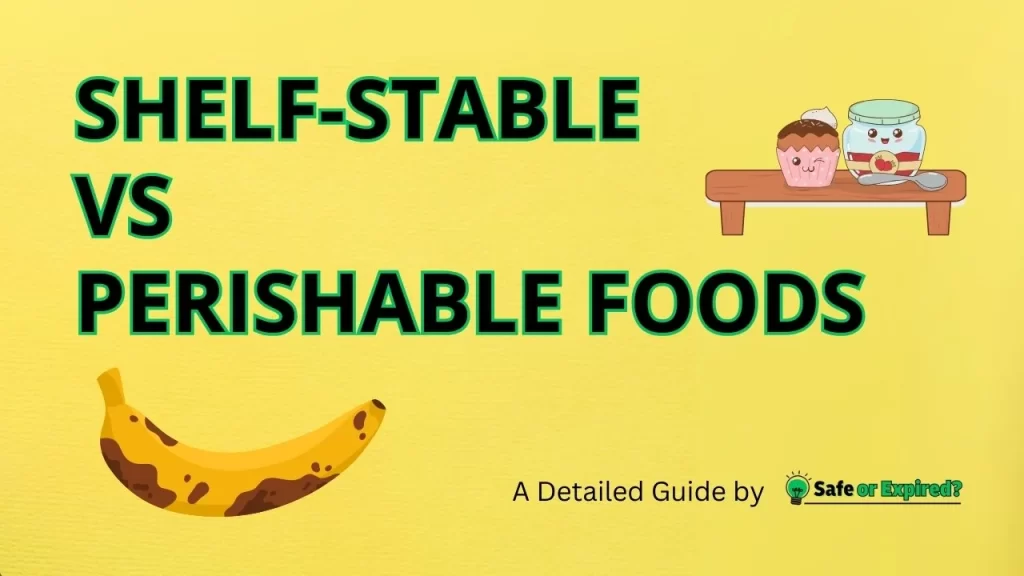“Shelf-Stable vs Perishable Foods” might sound like kitchen jargon, but it’s really about keeping your food happy and healthy, just like us! Ever wondered why some foods are fine sitting on the shelf while others need the fridge to stay fresh? You’re about to find out. Get ready to turn your kitchen into a smart food-saving space where nothing goes to waste, and everything tastes great.
Understanding Shelf-Stable Foods: What Makes Them Different?
Shelf-stable foods are those that can be safely stored at room temperature. You can put it in a sealed container for a long period of time and it won;t get spoiled. Such foods don’t require refrigeration to stay fresh and safe to eat until opened. The reason they can last so long without going bad is because of the way they are processed and packaged.
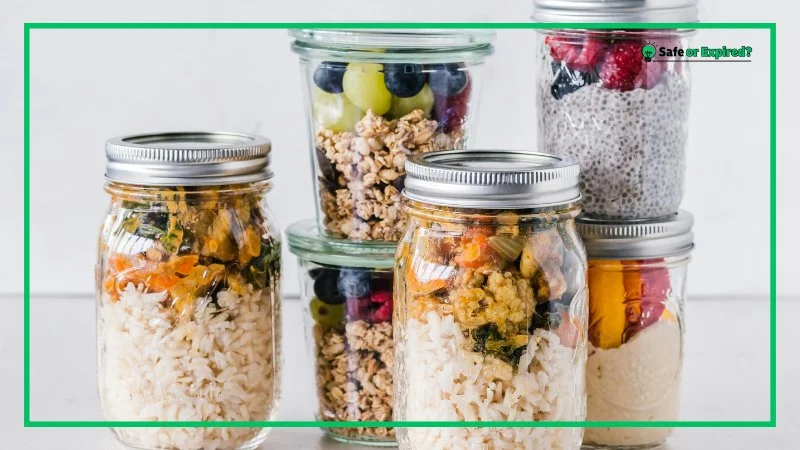
Now, you may be wondering, “How are foods made shelf-stable?” USDA has explained this in detail. Here’s an overview:
- Canning: Foods are cooked and sealed in cans. The high heat kills bacteria, and the seal can keep new bacteria from getting in. Read: “How long does canned tuna last after the expiration date?” to know more.
- Drying: Removing water from foods like fruits, vegetables, and meats prevents bacteria from growing because bacteria need moisture to survive.
- Preservatives: Adding certain safe chemicals to foods can slow down spoiling and keep food safe to eat longer.
- Aseptic Processing: This is when both the food and the packaging are sterilized separately, then the food is placed in the package in a sterile environment. It’s often used for milk and juice that don’t need refrigeration until after you open them.
The Science Behind Perishable Foods: Why Do They Spoil?
Perishable foods are the ones that can spoil or go bad quickly if they’re not kept in the fridge or freezer. This includes a lot of our favorite fresh stuff like fruits, vegetables, dairy products, meat, and fish. These foods need to be kept cool to slow down the growth of germs that can make them unsafe to eat.
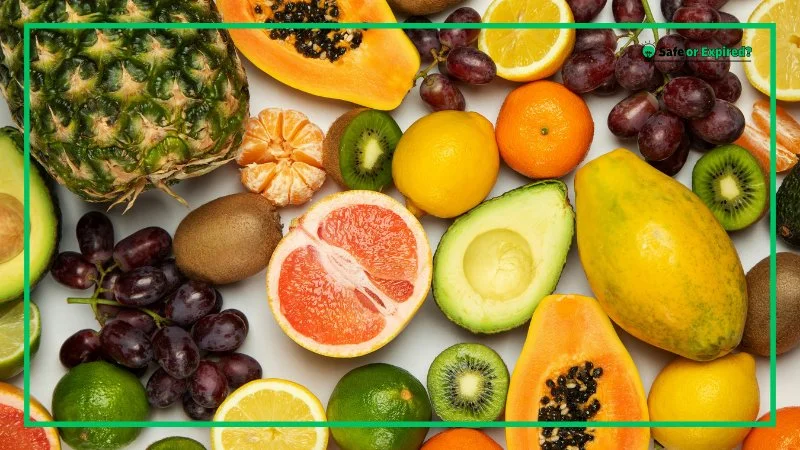
Wondering why perishable foods spoil? Let’s see the reasons:
- Bacteria and Microorganisms: According to the Encyclopedia of Food Sciences and Nutrition, perishable foods are a playground for bacteria, yeasts, and molds. These tiny creatures love to eat the same foods we do, and as they grow, they can make food go bad. Keeping food cold slows them down but doesn’t stop them entirely.
- Enzymes: Foods contain natural chemicals called enzymes, which can cause spoilage. For example, enzymes can make fruits ripen and eventually rot.
- Moisture: Many perishable foods have a lot of water in them. Microorganisms need water to grow, so foods with more moisture spoil faster.
- Oxygen: Air can help some microorganisms grow. The molecules in it can also react with fats and oils in foods, making them taste and smell bad. This is why some foods are packed in special ways that keep air out.
- Temperature: Warm temperatures make bacteria and enzymes more active. That’s why perishable foods spoil quickly if they’re not kept cool.
This happens in almost every perishable food, including carrots. If you’re interested in learning more details, then check out “Can you eat expired carrots? Yes or no?” to learn more.
Shelf-Stable vs Perishable foods: Complete Comparison
Shelf-stable and perishable foods stand on opposite sides of the storage spectrum. Shelf-stable items, like canned goods and dry pasta, last long without refrigeration. Perishable foods, such as meat and dairy, need cold storage to stay fresh. Understanding their differences ensures safe consumption and minimizes waste.
| Feature | Shelf-Stable Foods | Perishable Foods |
| Shelf-Life | Long-term storage without refrigeration | Requires refrigeration; short shelf-life |
| Storage Requirements | Store in a cool, dry place | Store in the refrigerator or freezer |
| Nutritional Content | Often fortified; diverse in nutrients | Typically fresher, higher in certain vitamins |
| Environmental Impact | Lower food waste; packaging considerations | Higher due to refrigeration, transportation |
| Convenience | High; ready to use or requires minimal preparation | Varies; often requires preparation and planning |
| Typical Products | Canned goods, dried grains, pasta | Fresh fruits, vegetables, dairy, meat |
Now, the details.
Shelf-Life and Storage Requirements
Shelf-stable foods, as their name implies, are capable of being stored safely on a shelf for an extended period. Examples are canned goods, grains, pasta, and some snacks.
The key to their longevity lies in their processing methods, which are designed to inhibit the growth of microorganisms responsible for food spoilage. It means these items do not require refrigeration until they are opened. So, you can even keep them in a box.
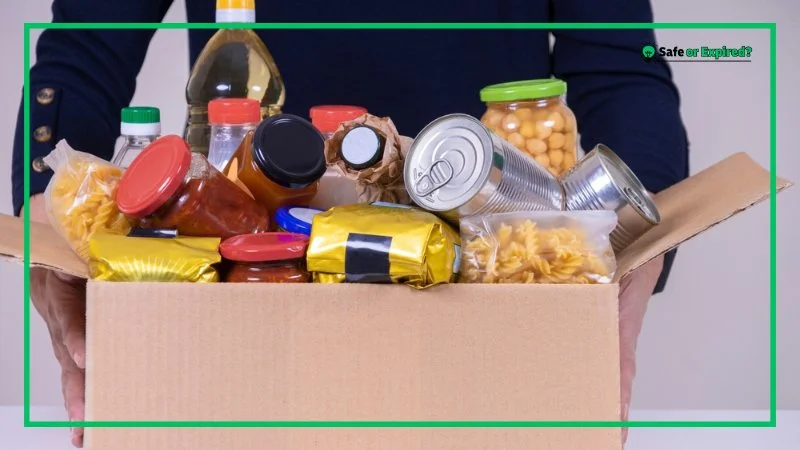
Conversely, perishable foods include dairy products, meat, poultry, fish, and fresh fruits and vegetables. These items are prone to spoil quickly due to their susceptibility to microbial growth and enzymatic activities. Perishable foods require proper refrigeration to slow down spoilage processes and maintain their freshness and safety for consumption.
Nutritional Content and Health Considerations
Both shelf-stable and perishable foods are nutritious. Perishable foods are often lauded for their fresh, unprocessed nature. They are a rich source of nutrients, like vitamins, minerals, and others. Fresh fruits and vegetables, for example, are key components of a healthy diet, offering a variety of nutrients that are crucial for maintaining health.
Shelf-stable foods, on the other hand, sometimes carry a reputation for being less nutritious due to processing. However, many such foods are nutritionally dense and fortified with additional nutrients to enhance their health benefits.
Environmental Impact and Sustainability
When we think about how our food choices affect the planet, it’s a big deal for a lot of us. Perishable foods, especially meat and dairy, use up more resources. They need to be kept cold, and getting them from the farm to our fridge takes a lot of energy. They can also go to waste fast if we don’t eat them in time.
On the other hand, shelf-stable foods usually have a smaller footprint. They don’t need to be rushed around as much, and they don’t spoil quickly, so we waste less food. But we also have to think about the packages they come in. If we don’t recycle, those packages end up as trash, which isn’t great for the planet either.
Cost Considerations
Shelf-stable foods are usually economical. Why? Well, because of these three reasons:
- Longer Shelf Life: Since shelf-stable foods can be stored for a long time without going bad, you might not need to buy them as often. This can save money over time because you waste less food.
- Bulk Buying: Because they last so long, it’s easier to buy shelf-stable items in bulk. Purchasing food items in bulk often comes with a discount, making each meal cheaper in the long run.
- Less Spoilage: With a longer shelf life, you’re less likely to throw away unused food, making shelf-stable items a more economical choice if you’re not able to shop frequently.
Perishable foods can cost you more because of these reasons:
- Shorter Shelf Life: Perishable foods need to be eaten quickly, which means you might end up buying them more often. If you don’t manage to eat them in time, you might have to throw them away, which is like throwing away money.
- Storage Costs: Perishable foods need to be refrigerated or frozen, which uses more energy and can add to your electricity bill. Plus, the cost of refrigeration equipment at stores and transport adds to the cost of these foods.
- Seasonal Variations: The price of fresh fruits and vegetables can go up depending on the time of year. When something is out of season in your area, it has to be shipped from farther away, and those transportation costs can make the price go up.
Here are some cost-effective tips for both types of foods:
- Plan Your Meals: Knowing what you’re going to eat ahead of time can help you buy exactly what you need, reducing waste and saving money.
- Buy Seasonal for Perishables: Fresh produce is usually cheaper (and tastier) when it’s in season. This is a great way to save money on perishable items.
- Look for Sales and Discounts: Both shelf-stable and perishable foods go on sale. Keeping an eye out for discounts and then stock up on staples or try fresh items at a lower cost.
- Preserve Fresh Produce: If you find a good deal on perishable items like fruits and vegetables, consider canning, freezing, or drying them yourself to extend their shelf life.
How to Store Shelf-Stable Foods for Maximum Shelf Life?
To maximize shelf life for shelf-stable foods, store them in a cool, dry spot. Keep them in their original packaging until ready to use. After opening, seal them tightly in airtight containers to protect against moisture and pests. This approach ensures longevity and preserves quality.
Choose the Right Location
The best spot for storing shelf-stable foods is in a dry place. Heat, moisture, and sunlight can lead to spoilage or decrease the quality of your food. A pantry, cupboard, or cabinet away from appliances that produce heat (like your stove or refrigerator) is ideal. Keep foods away from windows where sunlight can reach them.
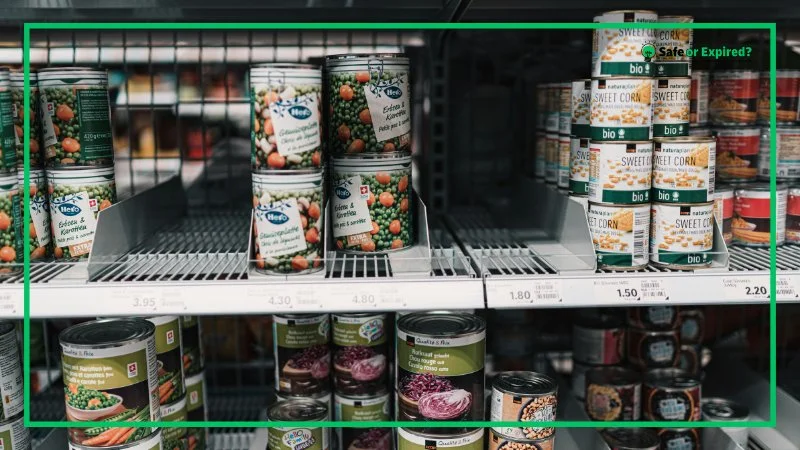
Here are the four best spots:
- Refrigerator: Ideal for perishables like dairy, meat, fruits, and vegetables. Keeps food fresh by maintaining a low temperature that slows bacterial growth.
- Freezer: Perfect for long-term storage of meats, frozen meals, and excess bread. Freezing food stops bacterial growth and preserves food for extended periods.
- Pantry: Best for dry goods such as cereals, pasta, and canned foods. A cool, dry, and dark environment prevents spoilage and maintains quality.
- Countertop: Suitable for fruits that ripen at room temperature, such as bananas, avocados, and tomatoes. Keep them in a bowl for easy access and monitoring.
Keep Them Sealed
After opening shelf-stable foods, it’s crucial to seal them properly if you’re not using them all at once. Use airtight containers, resealable bags, or jars with tight-fitting lids. This helps keep air, moisture, and pests out, preserving the food’s quality and extending its shelf life.
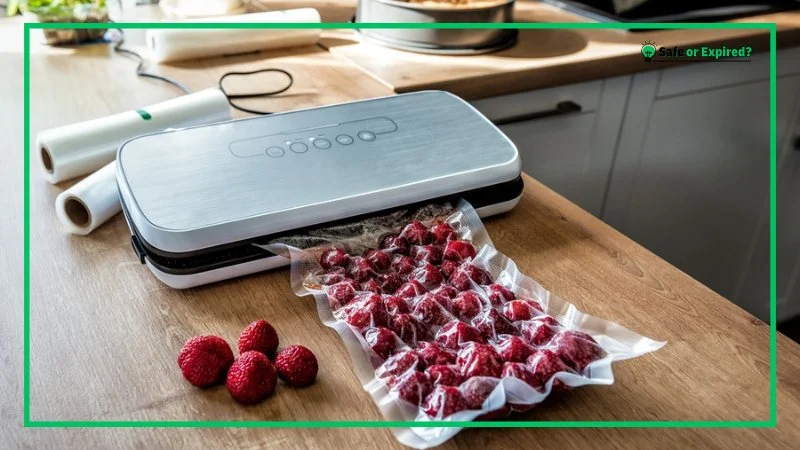
Sealing food properly is crucial for several reasons, primarily related to maintaining food quality and safety. The process of vacuum sealing, for instance, removes air from the packaging, which plays a significant role in preserving the freshness and extending the shelf life of food products.
By creating an airtight environment, vacuum sealing significantly reduces the presence of oxygen, which is essential for the survival and growth of aerobic bacteria and other microorganisms that cause food spoilage (Extension at the University of Minnesota).
Organize with a System
Use a “first in, first out” system for your pantry. This means putting newer items at the back and moving older ones to the front. This way, you use up the oldest items first and avoid having food sit for too long. Labeling foods with their purchase or opening date can also help you keep track of what to use first.
Control Temperature and Humidity
Ideal conditions are below 70°F (21°C) and at low humidity. High temperatures can cause foods to spoil faster, and humidity can lead to clumping or mold, especially in powdered products.
Moisture control, especially in packaged foods, is essential to limit the growth of spoilage microorganisms and prevent undesirable chemical reactions like lipid oxidation, which can cause rancidity (IFT).
In addition to proper packaging and storage conditions, using advanced postharvest technologies can also effectively manage quality loss due to improper humidity levels. Techniques such as active packaging and modified atmosphere packaging (MAP) can significantly enhance the shelf life of fruits and vegetables by controlling the moisture and gas composition around the stored produce (MDPI).
Protect from Pests
Store foods in pest-proof containers, especially items like flour, grains, and sugars, which can attract bugs. Regularly check your pantry for signs of pests and clean up spills or crumbs quickly to avoid attracting them.
Detection and monitoring are also key components of pest management in food storage. Modern techniques such as acoustical detection methods and semiochemical detection using gas chromatography can effectively identify the presence of pests early on, allowing for timely intervention before significant damage occurs (Frontiers).
Here are some more ways to protect your food or meal from pests:
- Dispose of Garbage Properly: Ensure your garbage bins are tightly sealed and that you dispose of garbage regularly. Use bins with lids that close securely, and if possible, keep them away from food preparation or storage areas.
- Inspect Groceries Before Storing: When you bring groceries home, inspect them for any signs of pests. Check packaging for holes or tears and look for any live insects. This can prevent bringing pests into your home inadvertently.
- Use Natural Repellents: Certain natural substances can deter pests. For example, bay leaves can be placed in dry goods like flour and rice to repel insects. Cloves and cinnamon sticks are also known to ward off many types of pests and can be strategically placed in pantry areas.
Be Mindful of Expiration Dates
While shelf-stable foods have a long shelf life, they don’t last forever. Pay attention to expiration or “best by” dates. Even if food looks and smells fine, it’s best to respect these dates for quality and safety reasons.
Avoid Contamination
Use clean utensils when handling or scooping out of bulk containers to avoid introducing bacteria or other contaminants.
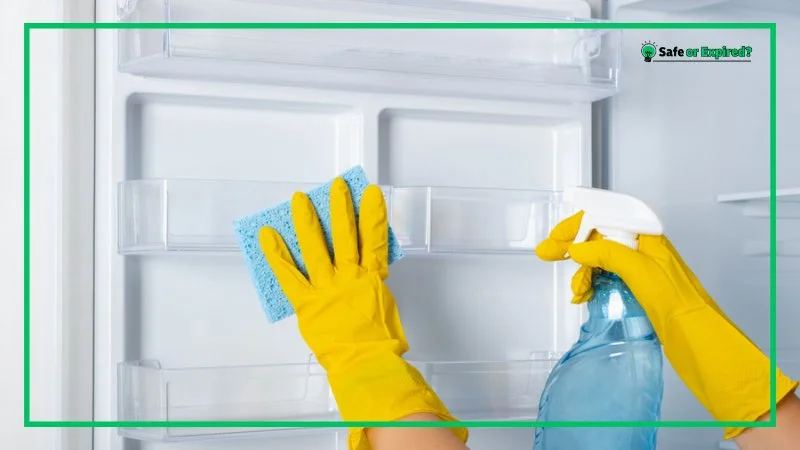
By following these storage tips, you can help ensure your shelf-stable foods stay fresh and safe to eat for as long as possible, helping you make the most of your pantry and reduce food waste.
Best Practices for Storing Perishable Foods Safely
For safe storage of perishable foods, refrigerate or freeze them promptly. Keep your fridge at or below 40°F and your freezer at 0 degrees. Store meats on the bottom shelf to prevent drips, and use produce drawers for fruits and vegetables. Regularly check expiration dates and consume or freeze items as needed.
Understand Refrigerator Zones
Different areas of your refrigerator have different temperatures, making some spots better for certain types of food. For example:
- Upper shelves: Slightly warmer, ideal for drinks and ready-to-eat foods like leftovers.
- Lower shelves: Colder, perfect for storing raw meat, poultry, and seafood to prevent their juices from contaminating other foods.
- Crisper drawers: Designed to hold fruits and vegetables in a more humid environment to keep them fresh longer.
- Door shelves: The warmest part of the fridge, suitable for condiments and juices, not for eggs or milk.
Use Airtight Containers
Transfer perishable foods to airtight containers if you’re not storing them in their original packaging. This helps maintain freshness, prevents odors from spreading, and keeps out contaminants. Glass or BPA-free plastic containers with tight-fitting lids are great options.
Monitor Fridge Temperature
Keep your refrigerator temperature optimal – at or below 40°F and your freezer at 0F°. These temperatures slow the growth of bacteria. Use a fridge thermometer to check, as the built-in thermostat may not always be accurate.
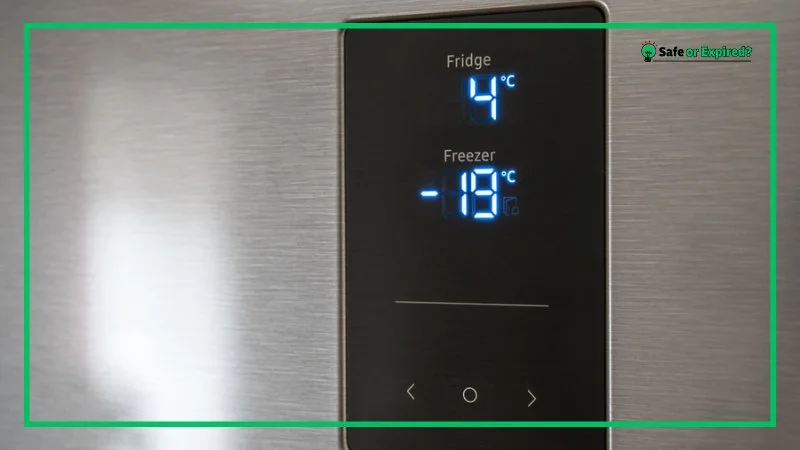
Practice FIFO: First In, First Out
Organize your fridge and pantry by the date you purchase items. Use older items before newer ones to ensure you’re consuming foods while they’re still fresh and reducing waste.
Understand Food-specific Storage Needs
- Fruits and Vegetables: Store fruits and veggies in separate drawers to prevent ethylene-sensitive vegetables from spoiling quickly due to ethylene-producing fruits.
- Dairy: Keep dairy products in the main part of the fridge, not the door, to keep them cooler.
- Meat, Poultry, and Seafood: Store these on the bottom shelf in a dish or container to catch any drips and prevent cross-contamination.
Use Freezing for Longer Storage
Freezing is a great way to extend the shelf life of many perishable foods, including bread, meat, and even some dairy products like cheese.
Just remember that while freezing can preserve food quality, it’s best to consume frozen foods within recommended time frames for the best taste and texture.
Pay Attention to Expiration Dates
Be mindful of “use by,” “sell by,” and “best before” dates. These can guide you on when to consume foods at their peak quality. Some foods can still be safe to eat after these dates, but they may not be at their best.
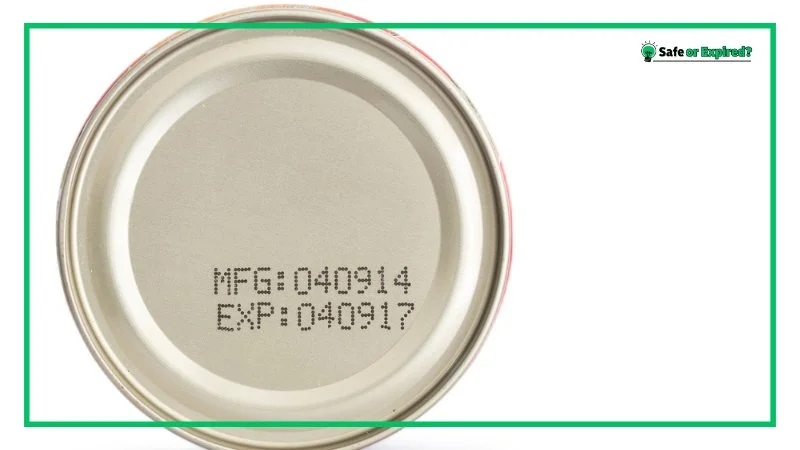
By following these best practices, you can ensure your perishable foods stay safe and delicious for as long as possible, helping you enjoy your meals to the fullest while minimizing waste.
Conclusion
Knowing the differences between shelf-stable and perishable foods not only helps in proper storage but also in maximizing the shelf life and quality of your groceries. Here’s a quick recap:
- Shelf-stable foods don’t require refrigeration until opened and have a longer shelf life.
- Perishable foods must be stored in the fridge or freezer to prevent spoilage.
- Understanding your refrigerator’s zones can help you store perishable foods more effectively.
- Airtight containers and FIFO (First In, First Out) method are key in prolonging the freshness of both shelf-stable and perishable items.
- Paying attention to expiration dates ensures you consume foods when they are at their best.
Now, you can ensure that your kitchen is stocked with fresh, safe-to-eat foods while also doing your part to reduce food waste.

